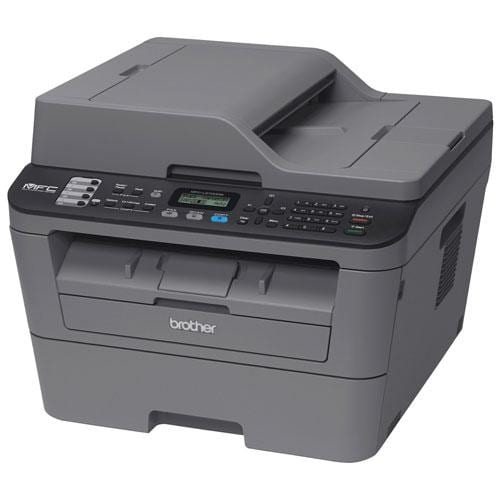
How does a laser printer work?
Laser printers are a lot like photocopiers and use the same basic technology. The first laser printers were actually built from modified photocopiers.
What is a laser printer?
In a photocopier, a bright light is used to make an exact copy of a printed page. The light reflects off the page onto a light-sensitive drum; static electricity makes ink particles stick to the drum; and the ink is then transferred to paper and “fused” to its surface by hot rollers. A laser printer works in almost exactly the same way, with one important difference: because there is no original page to copy, the laser has to write it out from scratch.
The information you store in your computer is in electronic format: each piece of data is stored electronically by a small switching device called a transistor. The printer’s job is to convert this electronic data back into words and pictures. With an inkjet printer, it’s easy to see how that happens: ink guns, operated electrically, fire precise streams of ink at the page. With a laser printer, things are slightly more complex. The electronic data from your computer is used to control a laser beam—and it’s the laser that gets the ink on the page, using static electricity in a similar way to a photocopier.
The Laser Printing Process:
- Millions of bytes (characters) of data stream into the printer from your computer.
- An electronic circuit in the printer figures out how to print this data so it looks correct on the page.
- The circuit then activates the corona wire, a high-voltage wire that gives a static electric charge to anything nearby.
- The wire charges up the photoreceptor drum so the drum gains a positive charge spread uniformly across its surface.
- The circuit activates the laser at the same time to make it draw the image of the page onto the drum. The laser beam doesn’t actually move: it bounces off a moving mirror that scans it over the drum. Where the laser beam hits the drum, it erases the positive charge that was there and creates an area of negative charge instead. Gradually, an image of the entire page builds up on the drum: where the page should be white, there are areas with a positive charge; where the page should be black, there are areas of negative charge.
- An ink roller touching the photoreceptor drum coats it with tiny particles of powdered ink (toner). The toner has been given a positive electrical charge, so it sticks to the parts of the photoreceptor drum that have a negative charge. No ink is attracted to the parts of the drum that have a positive charge. An inked image of the page builds up on the drum.
- A sheet of paper from a hopper on the other side of the printer feeds up toward the drum. As it moves along, the paper is given a strong negative electrical charge by another corona wire.
- When the paper moves near the drum, its negative charge attracts the positively charged toner particles away from the drum. The image is transferred from the drum onto the paper but, for the moment, the toner particles are just resting lightly on the paper’s surface.
- The inked paper passes through two hot rollers (the fuser unit). The heat and pressure from the rollers fuse the toner particles permanently into the fibers of the paper.
- The printout emerges.
We hope this article has been useful in understanding laser printers and how they work. The team here at Printer Repair Corp are all trained and skilled on laser printer reapairs, contact us if you need your laser printer repaired!




